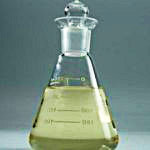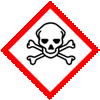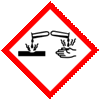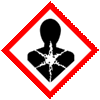 |
King of Chemicals Manufacturers |
Specifications, Properties, Uses, SDS of Formaldehyde Solution USP EP BP Ph Eur Grade Manufacturer Supplier Exporter Wholesale & Small Packs, CAS Number 50-00-0. |
|
| King of Chemicals has several associated companies having accreditations like cGMP, GLP - FDA Approved Good Manufacturing Practice and Good Laboratory Practice of WHO standard, ISO-9001, ISO-14001, ISO/IEC 17025, ISO ISO-45000, HACCP, FSSC 220000, FSSAI, "REACH" Registered, Kosher & Halal Certified. e-CTD and DMF support can be made available if needed. We offer USP NF BP Ph Eur EP IP JP Analytical Reagent FCC Food Grade Chemicals & Nutraceuticals. | |
        |
|
Muby Chem Pvt. Ltd. is a several decades old group of companies, engaged in manufacturing, supplying, distributing, wholesale supplies of Formaldehyde Solution for actual users, including retail or small pack supplies for research and development work.
We supply fine and speciality chemicals, pharmaceutical excipients, mineral fortifiers in chemically pure, analytical reagent grade, IP BP USP Ph Eur EP JP and other pharmaceutical grade monograph including FCC Food grade chemicals and Nutraceuticals at best prices. We and/or our associated units have all the facilities to supply as per cGMP standard observing good manufacturing practice and good laboratory practice. We can assure low microbial count and also offer a test certificate for the same. We maintain warehouses across USA, India, and UAE. Our group exports to USA, Canada, Mexico, Argentina, Brazil, Chile, Korea, Malaysia, Thailand, Indonesia, Europe, and several other parts of the world. We supply in wholesale container loads to small pack of few grams. Solid products may be specified for it size and shape as desired by the buyer.









Formaldehyde Solution CAS Number 50-00-0
For Properties Specifications Uses of Formaldehyde Solution Click Properties, Specifications, Uses, Price, Process of Formaldehyde Solution Manufacturer.
For For SDS MSDS Sheet of Formaldehyde Solution Click SDS Safety Data Sheet MSDS Sheet of Formaldehyde Solution Manufacturer.
The Properties, Specifications, Monograph and Uses of Formaldehyde Solution:
CAS Number: 50-00-0, EINECS EC Number: -, Molecular Formula: HCHO, Molecular Weight: 30.03, HS Code 29121100
Formaldehyde solutions appears as a colorless liquid with a pungent irritating odor. It generally contains 37% formaldehyde by mass and varying amounts of methanol, added to prevent precipitation of formaldehyde polymers. 10% solution of formaldehyde in water, is used as a disinfectant and to preserve biological specimens. It is also used as a preservative in some foods and in many products used around the house, such as antiseptics, medicines, and cosmetics. Formaldehyde is an important precursor to many other materials and chemical compounds and it is widely used in cemical and pharmaceutical industries.
Specifications of Formaldehyde Solution USP Grade
CH2O 30.03
Formaldehyde CAS 50-00-0.
Formaldehyde Solution in bulk containers contains not less than 37.0 percent, by weight, of formaldehyde (CH2O), with methanol added to prevent polymerization. Formaldehyde Solution in small containers (4 liters or less) contains not less than 36.5 percent, by weight, of formaldehyde (CH2O), with methanol present to prevent polymerization.
Packaging and storage: Preserve in tight containers, and preferably store at a temperature not below 15C.
Identification:
A: Dilute 2 mL with 10 mL of water in a test tube, and add 1 mL of silver-ammonia-nitrate: metallic silver is produced either in the form of a finely divided, gray precipitate, or as a bright, metallic mirror on the sides of the test tube.
B: Add 2 drops to 5 mL of sulfuric acid in which about 20 mg of salicylic acid has been dissolved, and warm the liquid very gently: a permanent, deep-red color appears.
Acidity: Measure 20.0 mL into a flask containing 20 mL of water, add 2 drops of bromothymol blue and titrate with 0.1 N sodium hydroxide: not more than 10.0 mL of 0.1 N sodium hydroxide is consumed.
Formaldehyde Solution BP Grade
Formalin
Formaldehyde Solution (35 per cent), Ph Eur
CH2O -- 30.03 -- CAS 50-00-0
Action and use: When suitably diluted, used in the treatment of warts.
DEFINITION
Content: 34.5 per cent m/m to 38.0 per cent m/m of formaldehyde (CH2O; Mr 30.03). It contains methanol as stabiliser.
CHARACTERS
Appearance: Clear, colourless liquid.
Solubility: Miscible with water and with ethanol (96 per cent). It may be cloudy after storage.
IDENTIFICATION
A. Dilute 1 ml of solution S (see Tests) to 10 ml with water. To 0.05 ml of the solution add 1 ml of a 15 g/l solution of chromotropic acid sodium salt, 2 ml of water and 8 ml of sulphuric acid. A violet-blue or violet-red colour develops within 5 min.
B. To 0.1 ml of solution S add 10 ml of water. Add 2 ml of a 10 g/l solution of phenylhydrazine hydrochloride, prepared immediately before use, 1 ml of potassium ferricyanide solution and 5 ml of hydrochloric acid. An intense red colour is formed.
C. Mix 0.5 ml with 2 ml of water and 2 ml of silver nitrate solution in a test-tube. Add dilute ammonia until slightly alkaline. Heat on a water-bath. A grey precipitate or a silver mirror is formed.
D. It complies with the limits of the assay.
TESTS
Solution S: Dilute 10 ml, filtered if necessary, to 50 ml with carbon dioxide-free water.
Appearance of solution: Solution S is colourless.
Acidity: To 10 ml of solution S add 1 ml of PhPh solution. Not more than 0.4 ml of 0.1 M sodium hydroxide is required to change the colour of the indicator to red.
Methanol: To pass Gas chromatography.
Sulphated ash: Maximum 0.1 per cent, determined on 1.0 g.
Formaldehyde Solution (35 Percent) is also offered as per EP grade monograph.
The MSDS-SDS Hazard Statement of Formaldehyde Solution:
Formaldehyde Solution (with Methanol) SDS Safety Data Sheet
MSDS, Material Safety Data Sheet 29-Jun-21
1. Product Identification
Product Name & Other Names: Formaldehyde Solution or Formalin (with Methanol)
CAS No.: 50-00-0
EINECS EC Code: 200-001-8
Molecular Weight: 30.03.
Chemical Formula: HCHO.
Relevant uses and uses advised against (if any): Industrial Manufacturing.
Suppliers: As per letterhead.
2. Hazards Identification
GHS, Globally Harmonized System Classification in accordance with 29 CFR 1910
Classification according to Regulation (EC) No 1272/2008
Acute toxicity, Oral (Category 3), H301
Acute toxicity, Dermal (Category 3), H311
Acute toxicity, Inhalation (Category 3), H331
Skin corrosion (Category 1B), H314
Skin sensitization (Category 1), H317
Germ cell mutagenicity (Category 2), H341
Carcinogenicity (Category 1B), H350
Specific target organ toxicity - single exposure (Category 1), H370
Specific target organ toxicity - single exposure (Category 3), Respiratory system, H335
Labeling according to GHS USA & Regulation (EC) No 1272/2008
GHS Label Elements  Toxic |
GHS Label Elements |
GHS Label Elements |
Signal Word: Danger
Hazard Statements:
H301+H311+H331 Toxic if swallowed, in contact with skin or if inhaled.
H314 Causes severe skin burns and eye damage.
H317 May cause an allergic skin reaction.
H335 May cause respiratory irritation.
H341 Suspected of causing genetic defects.
H350 May cause cancer.
H370 Causes damage to organs.
Precautionary Statements
P202: Do not handle until all safety precautions have been read and understood.
P260: Do not breathe dust/fume/gas/mist/vapors/spray.
P264: Wash ... thoroughly after handling.
P270: Do not eat, drink or smoke when using this product.
P271: Use only outdoors or in a well-ventilated area.
P272: Contaminated work clothing should not be allowed out of the workplace
P280-Wear protective gloves/protective clothing/eye protection/face protection.
P301+P310+330: IF SWALLOWED: Rinse mouth and immediately call a POISON CENTER or doctor/physician.
P302+P352: IF ON SKIN: Wash with soap and water.
P304+P340: IF INHALED: Remove victim to fresh air and keep at rest in a position comfortable for breathing.
P305+P351+P338: IF IN EYES: Rinse cautiously with water for several minutes. Remove contact lenses, if present and easy to do. Continue rinsing.
P308+313: IF exposed or concerned: Get medical advice/attention.
P314: Get Medical advice/attention if you feel unwell.
P360: Rinse immediately contaminated clothing and skin with plenty of water before removing clothes.
P363: Wash contaminated clothing before reuse.
P403+P233: Store in a well-ventilated place. Keep container tightly closed.
P405: Store locked up.
P501: Dispose of contents/container in accordance with local/regional/national/international regulations.
3. Composition/Information on Ingredients
Ingredient I: Formaldehyde 30-45% in water.
CAS No.: 50-00-0
EINECS EC Code: 200-001-8
Ingredient II: Methanol 5-20% in water.
CAS No.: 67-56-1
EINECS EC Code: 200-659-6
4. First Aid Measures
Always seek medical attention after first aid measures are provided.
Inhalation: Remove the victim to fresh air. If not breathing, give artificial respiration. If breathing is difficult, give oxygen. Get medical attention.
Ingestion: Do NOT induce vomiting. Never give anything by mouth to an unconscious person. Rinse mouth with water. Contact medical center quickly. Never give anything by mouth to an unconscious person. Get medical attention.
Skin Contact: Immediately flush skin with plenty of water for at least 15 minutes. Remove contaminated clothing and shoes. Get medical attention. Wash clothing before reuse. Thoroughly clean shoes before reuse.
Eye Contact: Check for and remove any contact lenses. Immediately flush eyes with running water for at least 15 minutes, keeping eyelids open. Cold water may be used. Get medical attention.
5. Fire Fighting Measures
Fire: Flash point: Not available.
Auto ignition temperature: Not available.
Toxic fumes, carbon dioxide and carbon monoxide may be formed in fire.
Fire Extinguishing Media: Dry chemical, foam or carbon dioxide and water spray jet.
Extinguishing Media Not recommended: None specified.
Special Information: In the event of a fire, wear full protective clothing and NIOSH-approved self-contained breathing apparatus with full face piece operated in the pressure demand or other positive pressure mode. At high temperatures under fire conditions, it may produce toxic or irritating fumes. Fire-extinguishing work is done from the windward and the suitable fire-extinguishing method according to the surrounding situation is used. Uninvolved persons should evacuate to a safe place.
6. Accidental Release Measures
Personal precautions, protective equipment, and emergency procedures: Avoid breathing dust/fumes/gas/mist/vapors/spray. Use individual protective equipment (waterproof boots, suitable protective clothing, safety glasses, etc.). Restrict unprotected personnel from the area. Prevent any contact with hot surfaces. Do not approach facing the wind. Do not touch the spilled material.
Environmental precautions: Do not let the product enter drains, soil, or water sources.
Methods and materials used for containment cleanup procedures and Storage:
Small Spill: Wear respiratory protection. Avoid breathing vapors, mist, or gas. Ensure adequate ventilation. Remove all sources of ignition. Evacuate personnel to safe areas. Beware of vapors accumulating to form explosive concentrations. Vapors can accumulate in low areas. Mop and pick up the material and place in an appropriate waste disposal container. Finish cleaning by spreading water on the contaminated surface and dispose of according to local and regional authority requirements.
Large Spill: Contain spilled material. Absorb with an inert, non-combustible absorbent material, (e.g., sand, earth, diatomaceous earth, vermiculite). Vacuum or sweep up and remove to an approved disposal container. Avoid mist formation. Keep away from heat. Keep away from sources of ignition. Provide ventilation. Contact Environment Agency.
7. Handling and Storage
Precautions for safe handling: Apply according to good manufacturing and industrial hygiene practices. Ensure proper ventilation. Wash thoroughly after handling. Do not drink, eat, or smoke while handling. Avoid contact with skin, eyes, and clothing. Minimize dust generation. Avoid breathing dust/fumes/gas/mist/vapors/spray. Avoid contact with eyes, skin, and clothing. Keep container tightly closed. Avoid ingestion and inhalation. Use individual protective equipment (waterproof boots, suitable protective clothing, safety glasses, etc.). Prevent any contact with hot surfaces.
Conditions for safe storage, including any incompatibilities: Store in cool, dry, and ventilated area away from heat sources and protected from sunlight in tightly closed original container. Keep air contact to a minimum. Do not leave the material container open. Store protected from heat, sparks and ignition sources and incompatible materials. Avoid contact with skin and eyes. Avoid inhalation of dust/mist/vapor. Do not store with incompatible materials like strong oxidizing agents, aniline, phenol, isocyanates, acid anhydrides, strong acids, strong bases, amines, peroxides, acid chlorides, alkali metals, reducing agents. Do not breathe mist or dust. Containers of may be hazardous when empty. Avoid contact.
8. Exposure Controls/Personal Protection
Airborne Exposure Limits:
Formaldehyde 37%, in Aqueous Solution
ACGIH: TLV-C 0.3 ppm
USA OSHA: PEL (TWA) 0.75 ppm
USA OSHA: PEL (STEL) 2 ppm
USA IDLH: 20 ppm
Methanol
ACGIH: TLV-TWA 200 ppm
ACGIH TLV-STEL: 250 ppm
USA OSHA: PEL (TWA) 260 mg/m³
USA OSHA: PEL (TWA) 200 ppm.
Ventilation System: A system of local and/or general exhaust is recommended to keep employee exposures as low as possible. Local exhaust ventilation is generally preferred because it can control the emissions of the contaminant at its source, preventing dispersion of it into the general work area. Please refer to the ACGIH document, Industrial Ventilation, A Manual of Recommended Practices, most recent edition, for details.
Personal Respirators (NIOSH Approved): For conditions of use where exposure to the substance is apparent and engineering controls are not feasible, consult an industrial hygienist. For emergencies, or instances where the exposure levels are not known, use a full-face piece positive-pressure, air-supplied respirator. WARNING: Air purifying respirators do not protect workers in oxygen-deficient atmospheres.
Skin Protection: Wear impervious protective clothing, including boots, gloves, lab coat, apron, or coveralls, as appropriate, to prevent skin contact.
Eye Protection: Use chemical safety goggles and/or a full-face shield where splashing is possible. Maintain eye wash fountain and quick-drench facilities in work area.
Other Control Measures: Maintain good housekeeping in work area. Dust deposits on floors and other surfaces may pick up moisture and cause the surfaces to become slippery and present safety hazards. Handle in accordance with good industrial hygiene and safety practice. Wash hands after handling.
9. Physical and Chemical Properties
Appearance: Clear liquid.
Odor: Typical aldehyde pungent smell.
Odor threshold: Not available.
pH: Not available.
Relative density: around 1.09
Boiling Point: >100C
Melting Point: Not available.
Flash point: Not available.
Auto-ignition temperature: Not available.
Decomposition temperature: Not available.
Upper/lower flammability or explosive limits: Not available.
Vapor pressure: Not available.
Vapor density: Not available.
Evaporation rate: Not available.
Flammability (solid, gas): Not available.
Partition coefficient: n-octanol/water: Not available.
Solubility: miscible with water
Viscosity: Not available.
Molecular Weight: 30.03.
Chemical Formula: HCHO.
10. Stability and Reactivity
Stability: Formaldehyde is stable under ordinary conditions of use and storage with the stabilizer.
Hazardous Decomposition Products: Carbon dioxide, carbon monoxide and toxic fumes may form when heated to decomposition.
Incompatibilities: Strong oxidizing agents, Aniline, Phenol, Isocyanates, Acid anhydrides, Strong acids, Strong bases, Amines, Peroxides, Acid chlorides, Alkali metals, Reducing agents, Heat.
Conditions to Avoid: Heat, flames, ignition sources and incompatibles.
11. Toxicological Information
Oral rat LD50: Not available
The product is listed as carcinogen, Group 1: Carcinogenic to humans (Formaldehyde).
Warning: contains methanol. May be fatal or cause blindness if swallowed.
Mutagenic Effects: Not available.
Reproductive Effects: No information available.
12. Ecological Information
Environmental Toxicity: Toxic to fish and aquatic life.
Results of PBT and vPvB assessment: This substance/mixture contains no components considered to be either persistent, bioaccumulative and toxic (PBT), or very persistent and very bioaccumulative (vPvB) at levels of 0.1% or higher.
13. Disposal Considerations
Whatever cannot be saved for recovery or recycling should be managed in an appropriate and approved waste disposal facility. Processing use or contamination of this product may change the waste management options. State and local disposal regulations may differ from federal disposal regulations. Dispose of container and unused contents in accordance with law.
14. Transport Information
Land Transport DOT USA, TDG Canada & ADR/RID Europe
UN Number: 2209, Class: 8, Packing group: III
Proper shipping name: Formaldehyde solution
Sea Transport IMDG/IMO
UN Number: 2209, Class: 8, Packing group: III
Proper shipping name: Formaldehyde solution.
Air Transport ICAO/IATA
UN Number: 2209, Class: 8, Packing group: III
Proper shipping name: Formaldehyde solution.
15. Regulatory Information
SARA 311/312 Hazards: See section 2.
Section 16 - Additional Information
DISCLAIMER: The information and recommendations set forth herein are presented in good faith and believed correct as of the date hereof. It is compiled from various sources, and it is not necessarily all inclusive nor fully adequate in every circumstance. In addition, these suggestions should not be confused with nor followed in violation of applicable laws, regulations, rules, or insurance requirements applicable. This SDS MSDS sheet is intended only as a guide to the appropriate precautionary handling of the material by a professionally trained person using this product. Individuals receiving the information must exercise their independent judgment in determining its appropriateness for a particular purpose. This shall not constitute a guarantee for any specific product features and shall not establish a legally valid contractual relationship. In no case shall our company be liable to loss or damages by the product user.
Formaldehyde Solution Manufacturers, Suppliers, Exporters, Wholesalers:
King of Chemicals manufacturers

Plot No. 2900/46&47 + 2900/163to167, GIDC, Ankleshwar, Dist. Bharuch, India
India, USA, UAE
TEL: (Office) 91-22-23774610, 91-22-23723564
email: info@kingofchemicals.com
Copyright and Usual Disclaimer is Applicable --- April 12, 2025
If I give you “My Word” Nobody can undo it.
If I sign an “Agreement” my Lawyer will undo it
Our products are for industrial and laboratory use only. The user must test the material before use. We are not dispensing chemists or druggist and do not offer over the counter type (OTC) products for medical use by individuals.
We and our associates manufacture pure chemicals surpassing Monograph Specifications of Analytical Reagent Standards, British & European Pharmacopoeia BP Ph Eur EP Standard, US Pharmacopoeia USP NF Standard, Indian Pharmacopoeia IP Standard, Japan Pharmacopoeia JP Standard, FCC Food Grade Standard. |
|

